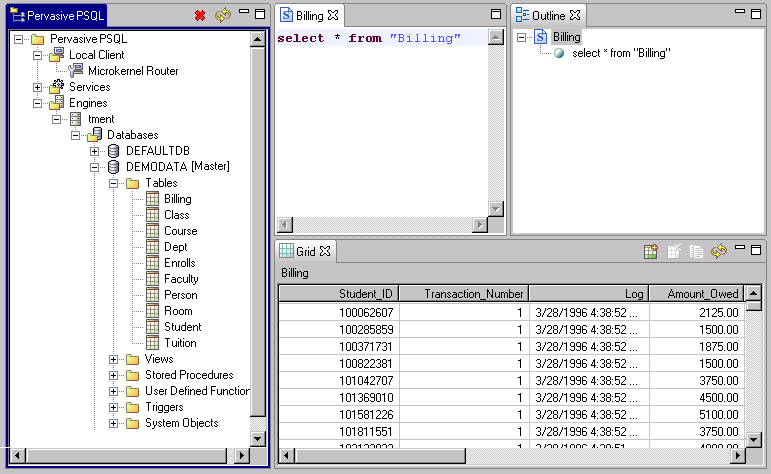
|
You are not required to log in as user psql or root to run PCC. However, if you are neither of these users, you must be a member of group pvsw.
The "SWT no more handles" error is caused by X-Server denying a connection to a client. Before switching to user psql or root, open a console window and type xhost + to allow other clients to connect to X-Server.
Also, sometimes the display environment variables needs to be set. As user psql or root, type the following command at a console window:
|
|
|
By default, the log file of PCC errors is located in a subdirectory of the user’s home directory (the subdirectory is dir_pcc/workspace/.metadata). For troubleshooting, you may find it more convenient to redirect the errors to the console window.
|
|
|
1
|
|
4
|
|
•
|
|
•
|
|
•
|
|
Right-click on the object then click Properties.
|
||
|
1
|
|
2
|
Click General.
|
|
•
|
|
•
|
|
•
|
|
•
|
|
1
|
|
a.
|
To set preferences for Data Grid, click Data Grid.
|
|
b.
|
|
c.
|
To set preferences for SQL Editor, click SQL Editor.
|
|
d.
|
To set preferences for Table Editor, click Table Editor.
|
|
e.
|
To set preferences for Text Output, click Text Output.
|
|
•
|
|
•
|
|
•
|
|
•
|
|
•
|
|
•
|
ODBC Administrator—separate choices for 32-bit Administrator and 64-bit Administrator on 64-bit operating systems (see DSNs and ODBC Administrator in SQL Engine Reference). Note that Windows uses whichever ODBC Administrator is open if you try to invoke the other one. That is, if the 32-bit ODBC Administrator is open and you attempt to start the 64-bit one, Windows displays the 32-bit version (and vice versa). In other words, only one version of ODBC Administrator runs at a time. This is a limitation of Windows, not Pervasive PSQL.
|
|
•
|
|
•
|
Gateway Locator (if PCC installed with Pervasive PSQL Workgroup) (see Gateway Configuration in Getting Started With Pervasive PSQL)
|
|
1
|
|
2
|
Click External Tools.
|
|
3
|
Click New.
|
|
4
|
|
5
|
Type the path and file name of the program for Tool Location.
|
|
6
|
Optionally, type any parameters for Tool Parameters that should be passed to the program when the program starts.
|
|
7
|
Click OK.
|
|
8
|
|
1
|
|
2
|
Click External Tools.
|
|
3
|
Click the desired tool in the External Tools list.
|
|
a.
|